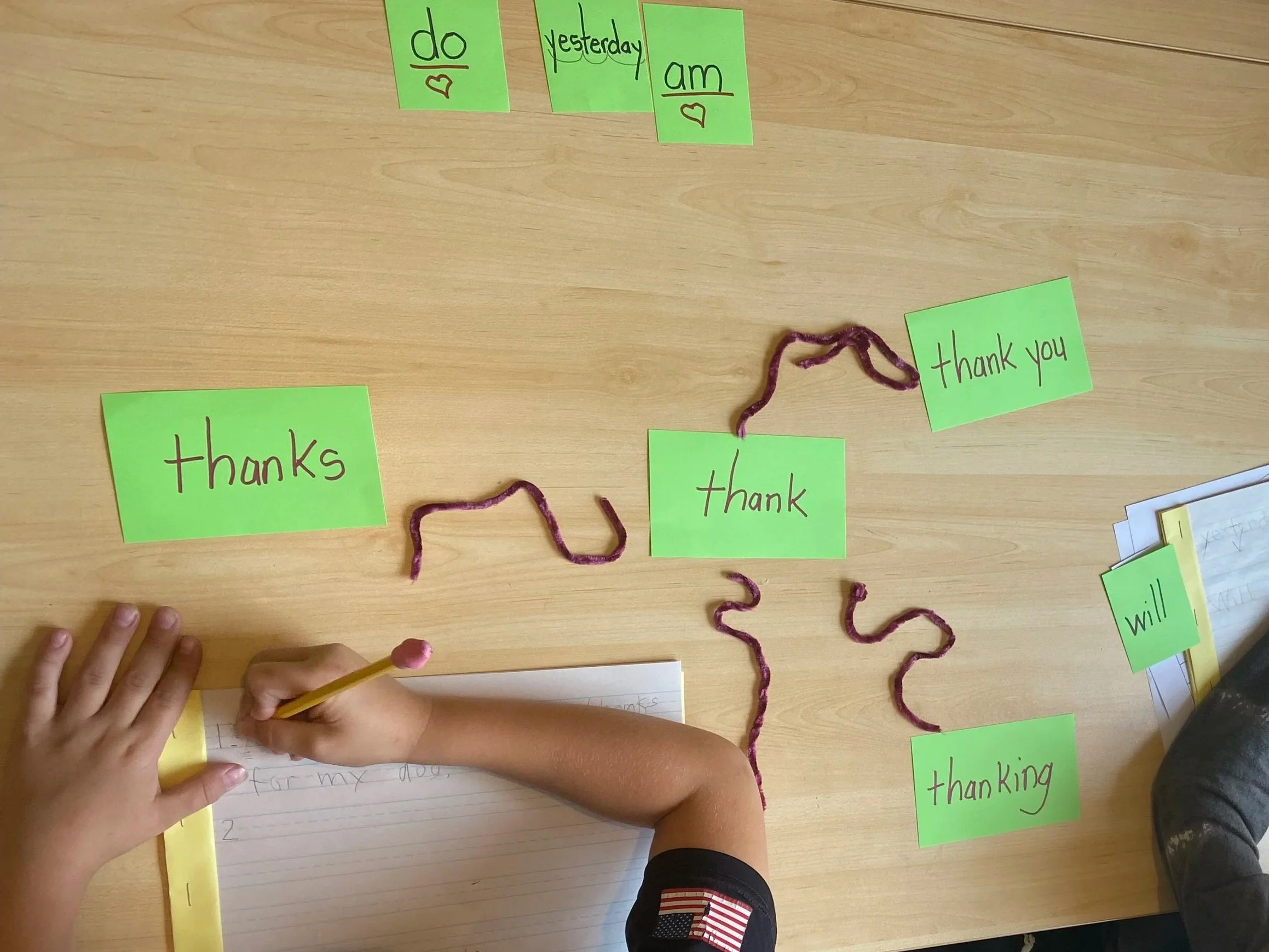
What is the Orton-Gillingham Approach?
The Orton-Gillingham Approach is a direct, explicit, multi-sensory, and structured way to teach reading, writing, and spelling. It is especially for individuals with dyslexia or those for whom literacy does not come easily.
It is an approach, not a program. Certified Orton Gillingham practitioners personalize lessons to meet each learner’s needs. Lessons are sequential and diagnostic-prescriptive, meaning lessons build step by step while continuously responding to a student’s progress.
My Process:
1. Initial Consultation
I begin with a conversation with parents to understand their child’s learning profile, history, and specific areas of concern.
2. Review of Evaluations
Parents are encouraged to share any neuropsychological or educational evaluations. I carefully review these reports to identify the child’s strengths, challenges, and recommended areas for targeted instruction.
3. Scheduling and Setting
Together, we establish a consistent schedule and determine the most convenient location for tutoring. Some students are seen at their schools during the day, while others come before or after school for individualized sessions.
4. Informal Assessment
During the first few sessions, I conduct informal assessments to observe reading, writing, and spelling skills. This helps refine the instructional plan and ensure lessons meet the student’s unique needs.
5. Personalized Instructional Plan
Based on these insights, I create a structured, sequential plan for instruction using the Orton-Gillingham Approach to share with parents. Each lesson builds on prior learning and adapts to the student’s ongoing progress.
Why is the Orton-Gillingham Approach so effective?
Orton-Gillingham practitioners design every lesson to meet your child’s individual needs. Each individual lessons teaches your child to builds and break down language.
Every concept is clearly explained, modeled, and practiced. Individualized lessons move from guided instruction to independent application, helping your child retain what they’ve learned and use it automatically when reading and writing.
Lessons present skills from simple to more complex ones. Previously taught material is continuously reinforced and connected to new learning. Instruction is always adapted to the needs and pace of your child.
Time is spent teaching your child to understand how language works and not just to memorize it. They learn why patterns exist and how to apply them thoughtfully and independently.
Above all, instruction is delivered in a way that builds trust and confidence. Frequent success helps students feel capable, supported, and motivated to keep growing.
Individualized instruction with Nicole will provide your child with skills and strategies as well as meaningful practice that lead to genuine understanding and achievement.
Revised 2025 Dyslexia Definition
Dyslexia is a specific learning disability characterized by difficulties in word reading—affecting accuracy, speed, or both—and/or spelling, that can vary depending on the written language system. These difficulties reflect performance at the low end of a continuum of literacy skill and occur despite evidence-aligned instruction that is effective for the individual’s peers. The cause and development of dyslexia involve the interplay of multiple biological and environmental influences. Phonological and/or morphological difficulties are common but not always present. Among the secondary consequences are limitations in language development and academic progress as well as challenges to psychological well-being and vocational opportunities. Although identification and targeted instruction are important at any age, language and literacy support before and during the early years of education can be particularly effective.

